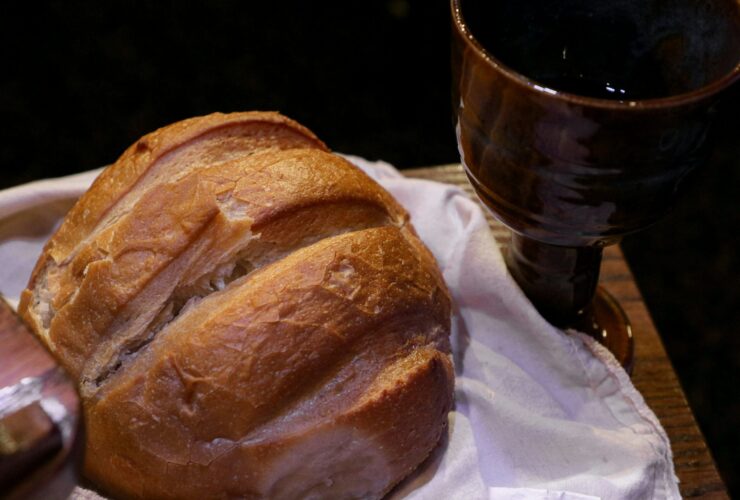In the Gospels, the Sea of Galilee plays a major role in the ministry of Jesus. In Jesus’ day, the Sea of Galilee was an important body of water utilized for travel, the distribution of goods and crops, and of course for fishing. Hundreds of different ships would have traversed the waters of this 14-by-8-mile lake, and 15-16 ancient ports provided docking points and shelter from storms. The Sea of Galilee is also Israel’s only freshwater lake and is the world’s lowest geographical freshwater lake. It is also known by the names Sea of Tiberius (the name of an important city in the time of Jesus), and the Lake Kinneret.
Today, its waters are higher than they were in the first century. This has long been evidenced by the flooding of the ruins of ancient homes and villages that surely would not have been originally built where they could be regularly flooded by the seasonal changes of the lake. More evidence comes in the form of modern droughts. When drought arrives and the level of the lake recedes, ancient ports and their ruined breakwaters are revealed. The higher level of the lake today is due to a natural change that occurred around 1,000 years ago. The main outlet of the lake into the Jordan river was silted up and replaced by an outlet of smaller size that slowly rose the level of the lake, resulting in water that is 3 feet higher than in Jesus’ day.
“While walking by the Sea of Galilee, he saw two brothers, Simon (who is called Peter) and Andrew his brother, casting a net into the sea, for they were fishermen.”
Matthew 4:18
The Sea of Galilee has a large tourist industry today thanks to its appearance in the gospels. Jesus sailed here, taught here, walked on water here, calmed storms, and visited villages and cities that surrounded the lake. And now, thanks to archaeological investigation, a lot is known about the harbours where he and the disciples would have docked.
Ancient harbours consisted of breakwaters, which were large stone constructed arms that would extend out into the lake to create an area of still water for ships to be safer from the lake’s famous storms. After the breakwaters were constructed, piers would be built to moor ships to and promenades where sailors, travellers, and merchants could walk. Harbours could also have markets for selling fish, areas to repair boats, storehouses and administrative buildings, watchtowers, and even Roman toll stations. We’re told in the Gospels that the disciple Matthew/Levi worked a tax booth at Capernaum, which apparently was a popular port for travellers and trade (Matthew 10:3, 17:24). Work at Capernaum has revealed a large harbour with several piers of different shapes and sizes, including long and curved piers, and triangular shaped piers.
At Kursi, which was known as Gergesa, the site of Jesus’ exorcism of demons from a man and into a herd of pigs (Luke 8:22-39), a large shallow rock-cut pool was a part of the ancient harbour. Researchers believe that fishermen would keep their live fresh-caught fish in it, for sale.
The remains of an impressive harbour has been identified at the ancient city of Gadara and its lower city known now as Tel Samra. Its breakwaters enclosed an area of 3 acres and boasted a very large promenade. Some researchers believe that from this harbour Roman nautical games (Naumachia) re-enacting naval battles were performed, with coins from Gadara marked with images of roman warships on them.

Corie Bobechko is a daily co-host, speaker, and writer of Bible Discovery. She also hosts a YouTube channel that shows how history and archaeology prove the Bible. Her heart for seekers and skeptics has led her to seek truth and share it with others. Corie also has a Bachelor of Theology from Canada Christian College.
• Nun, M. (1993). Cast Your Net Upon the Waters: Fish and Fishermen in Jesus’ Time. Biblical Archaeology Review, 19(6), 46–49, 51–56, 70.
https://www.baslibrary.org/biblical-archaeology-review/19/6/11
• Murphy-O’Connor, J. (1999). Fishers of Fish, Fishers of Men. Bible Review, 15(3), 22–27, 48.
https://www.baslibrary.org/bible-review/15/3/13






